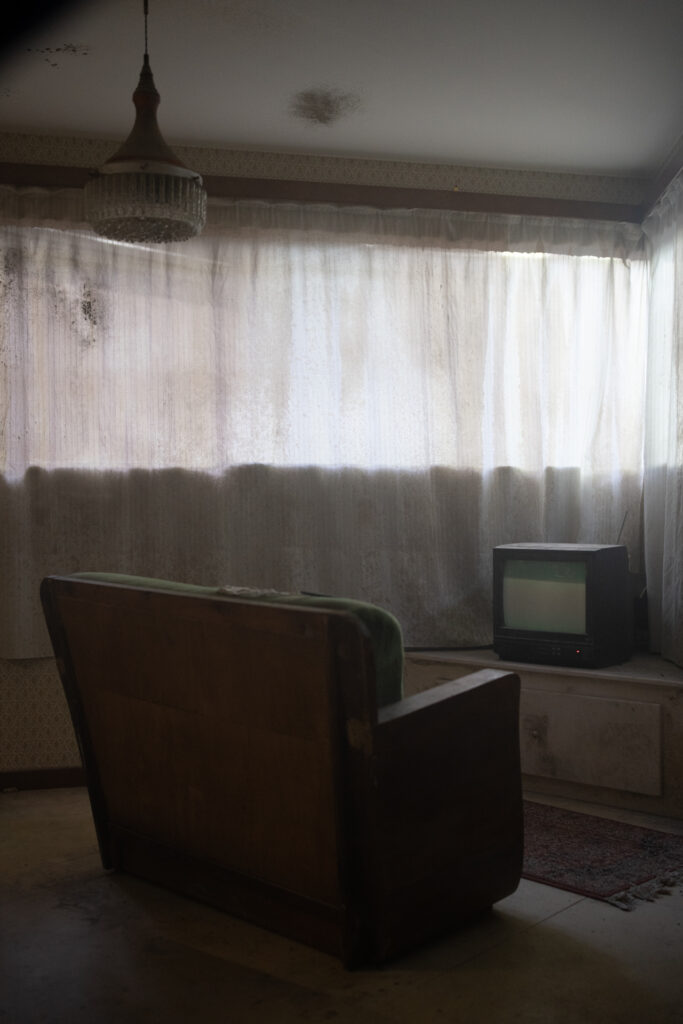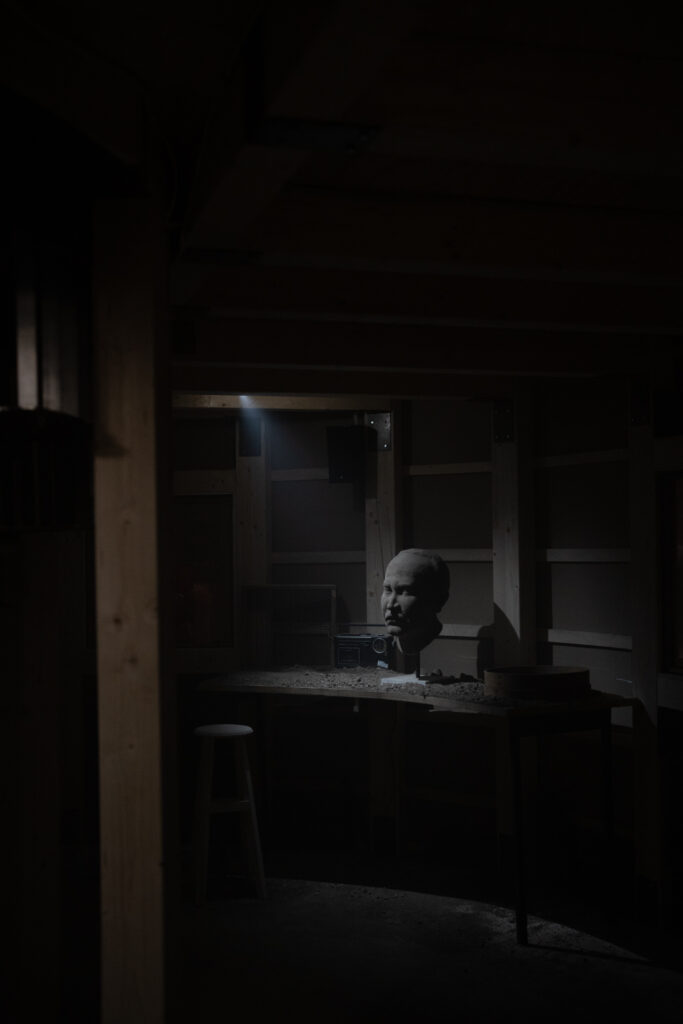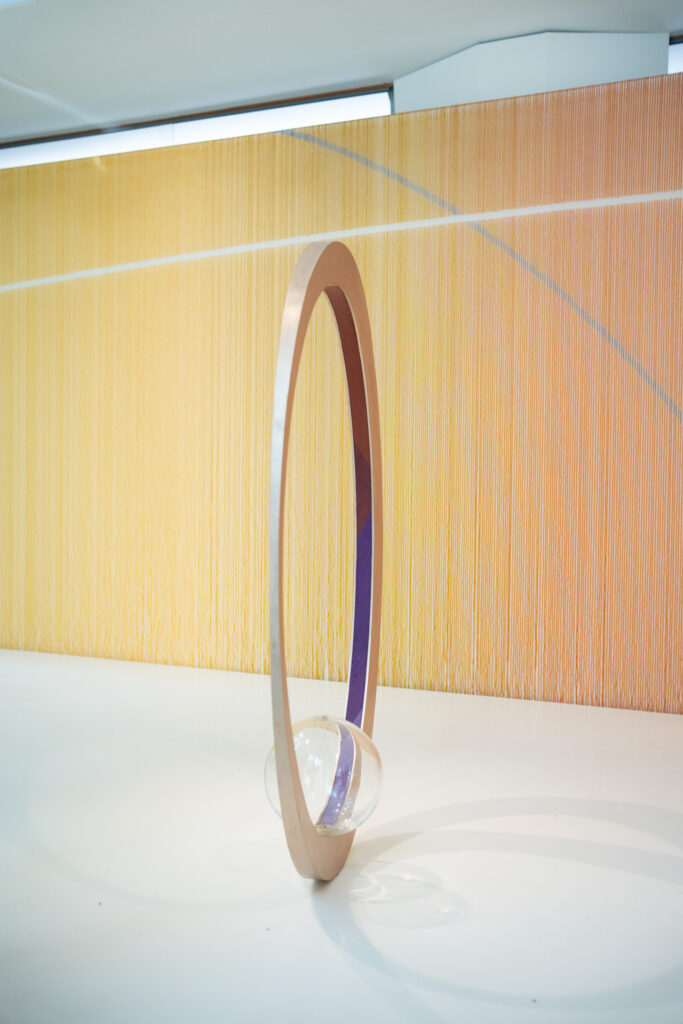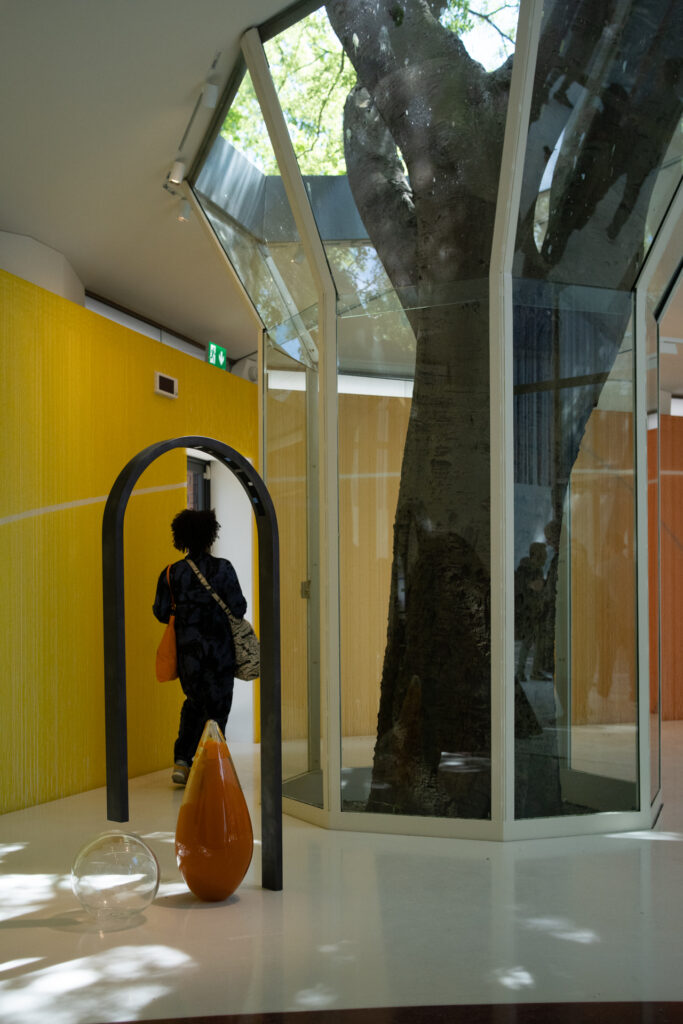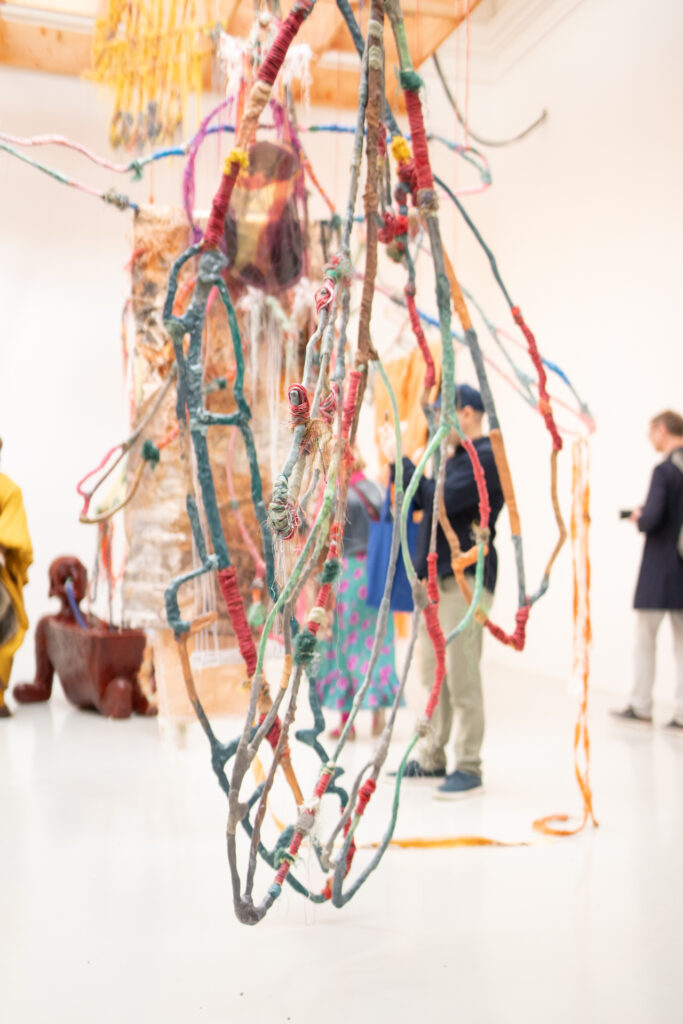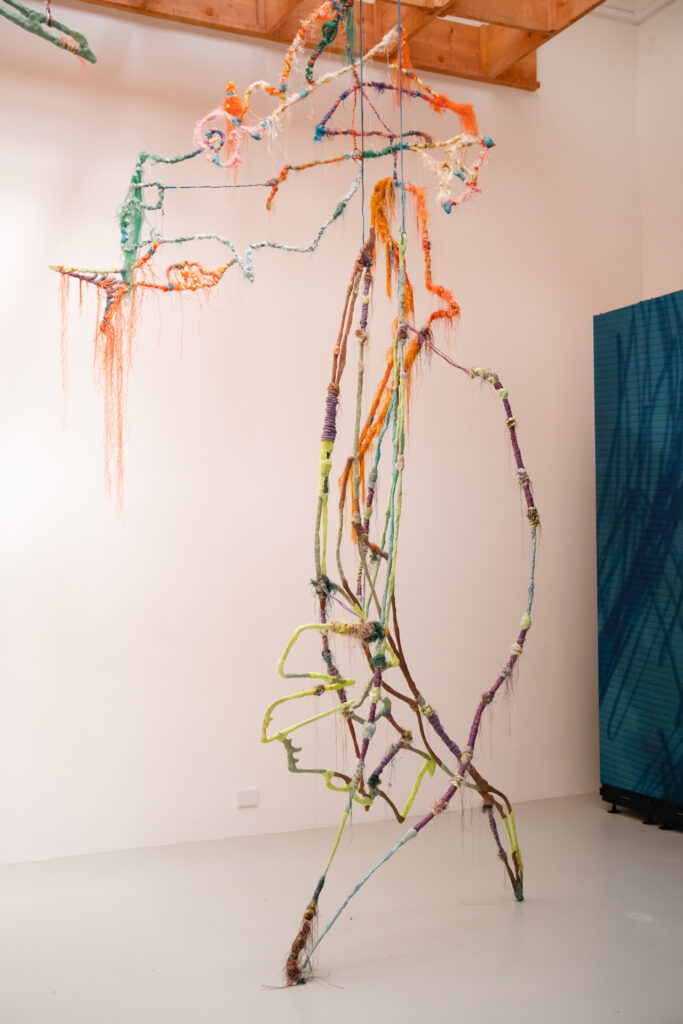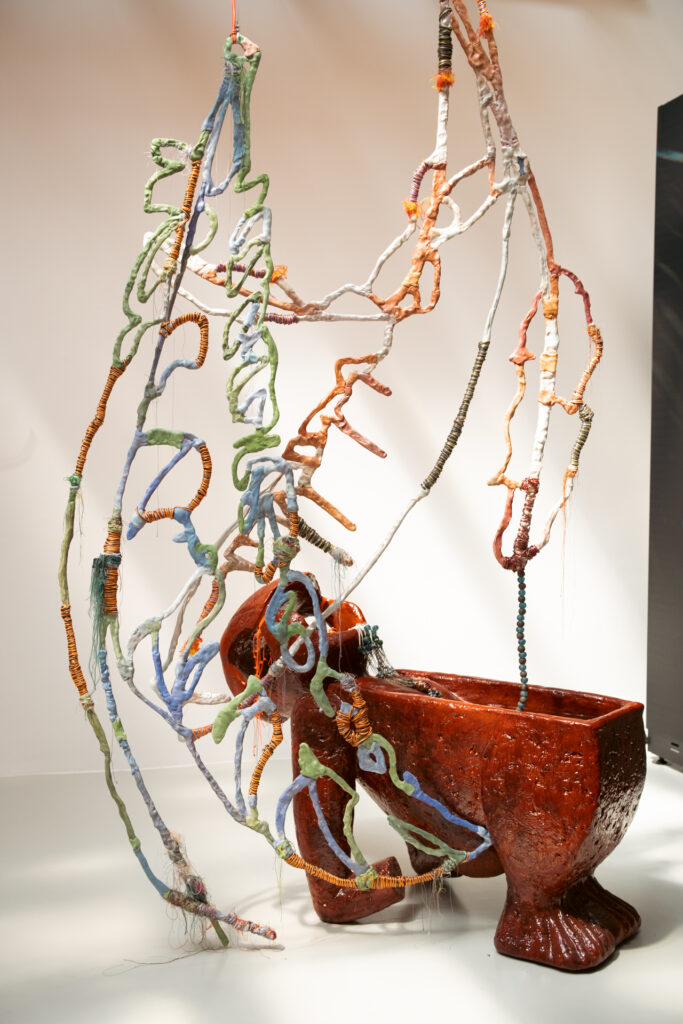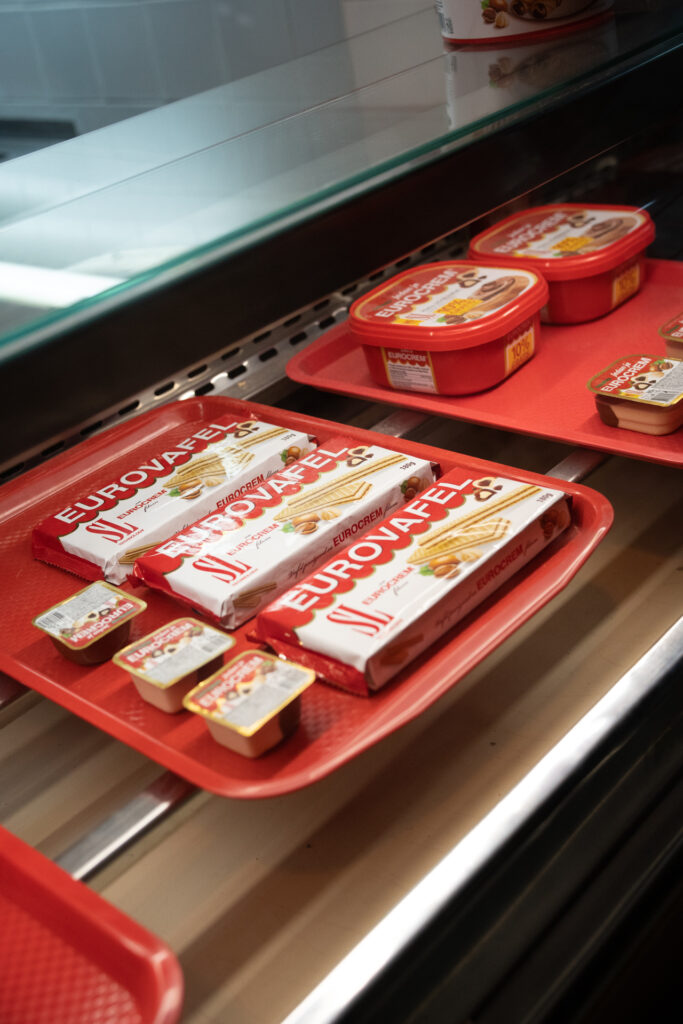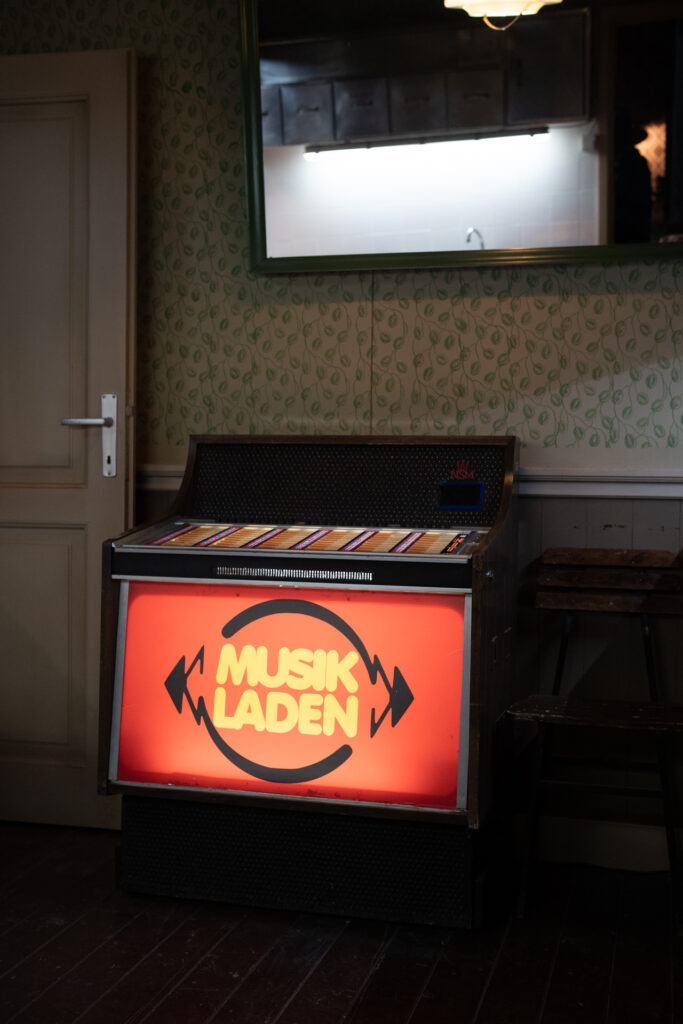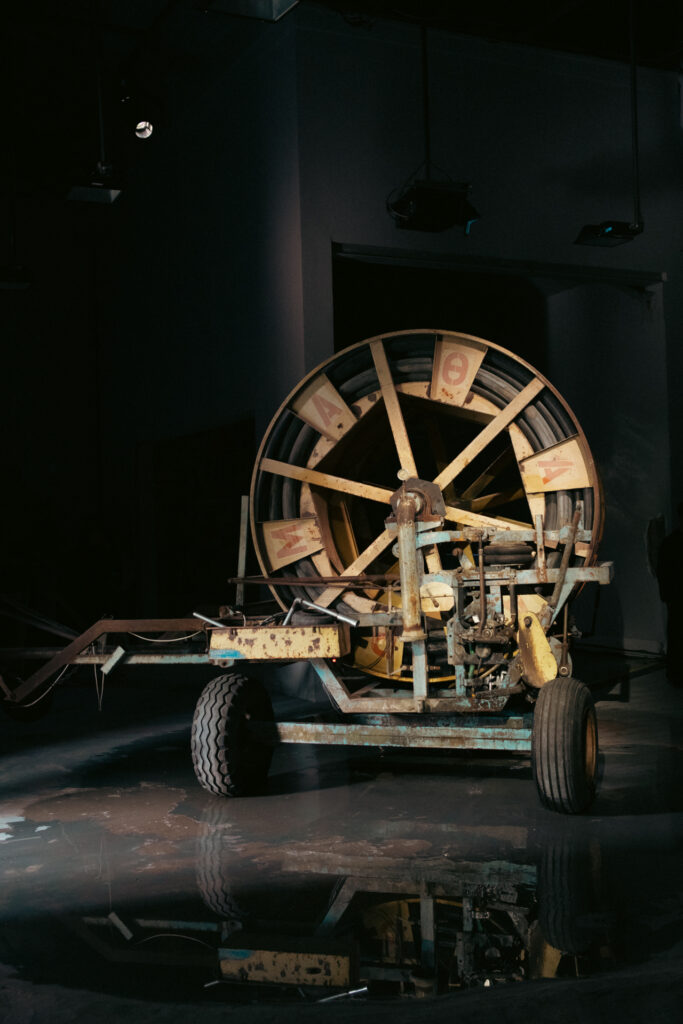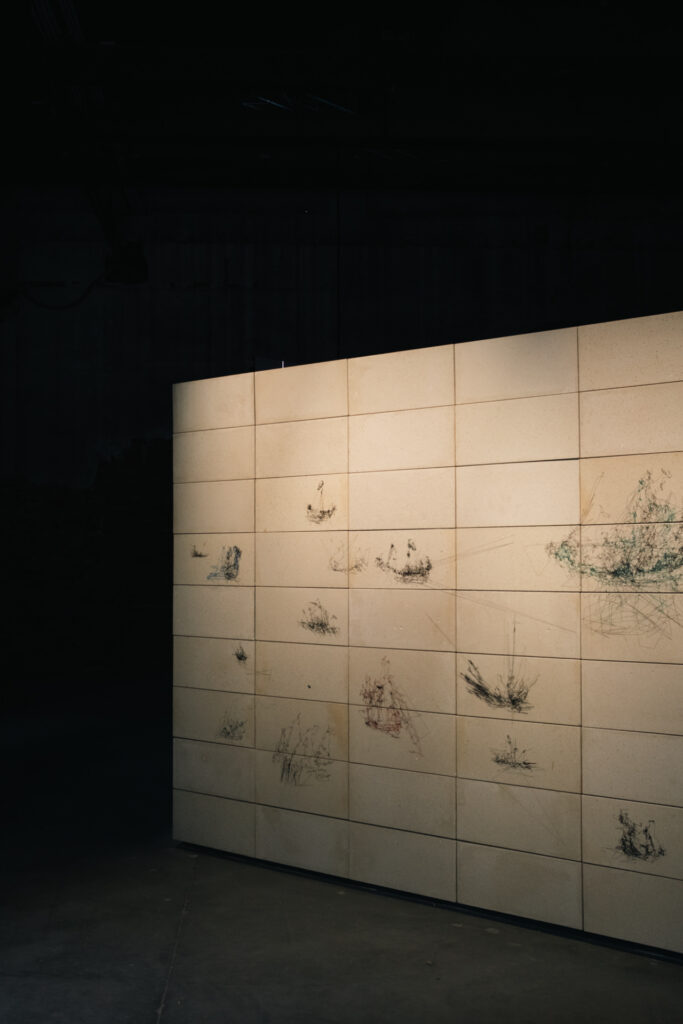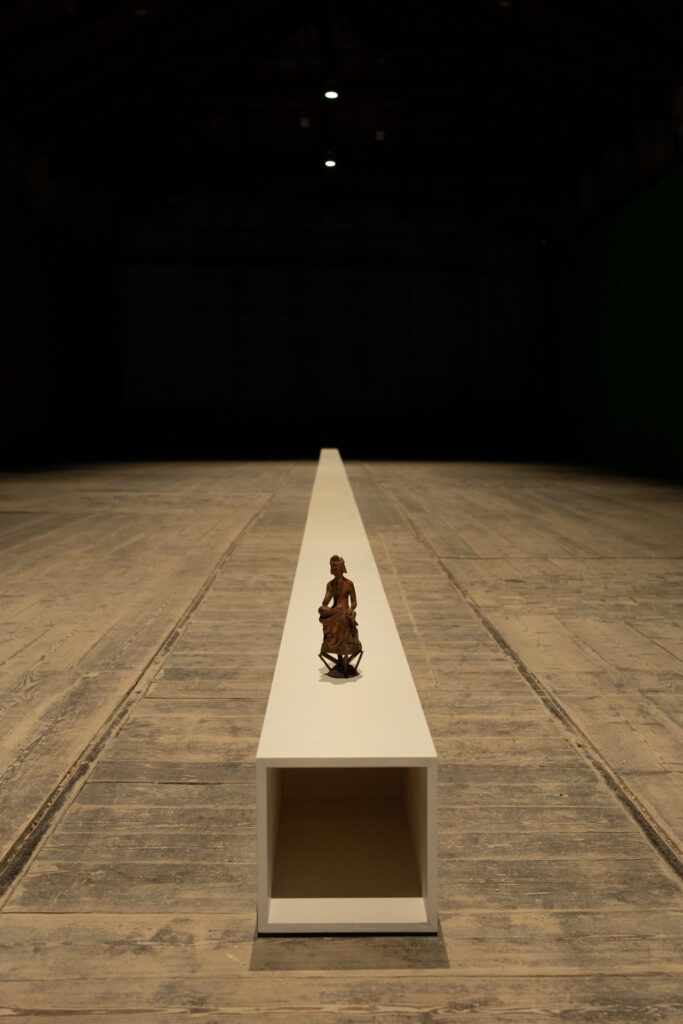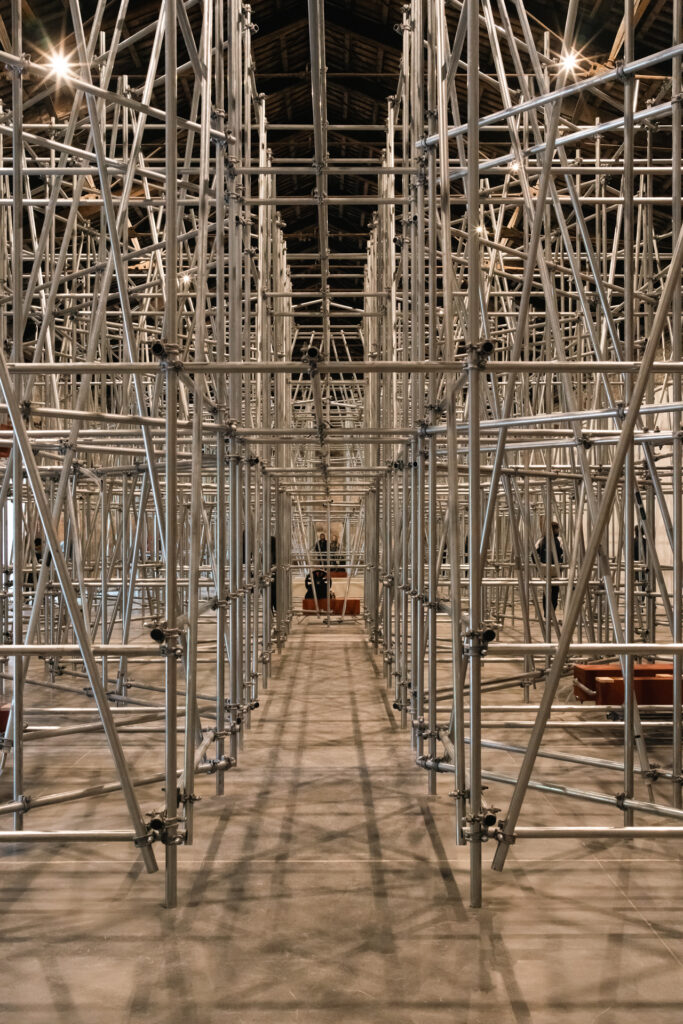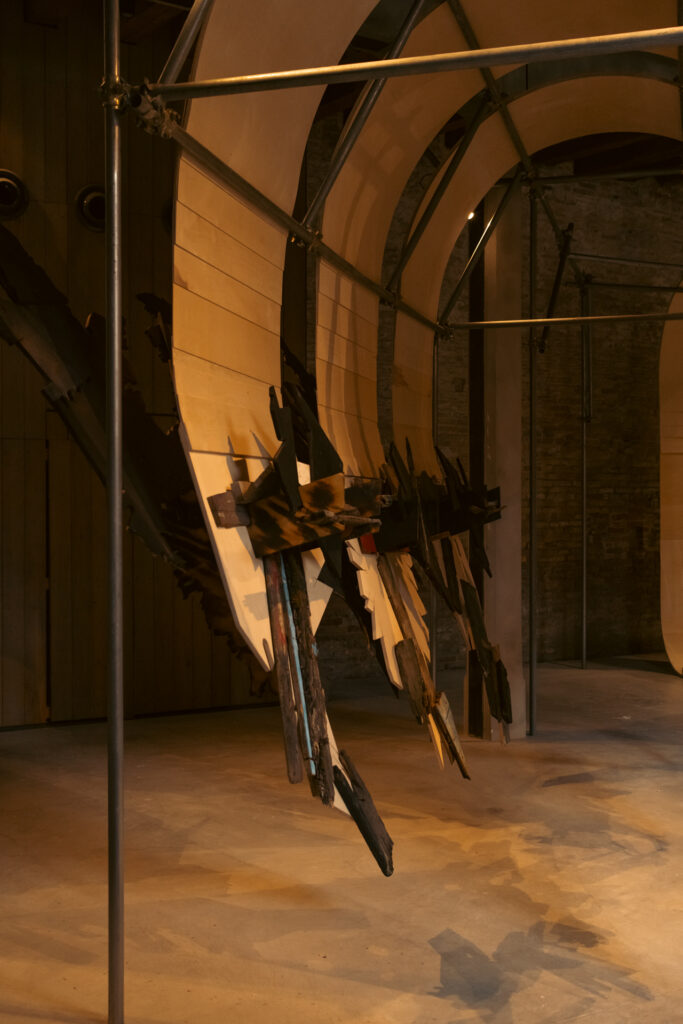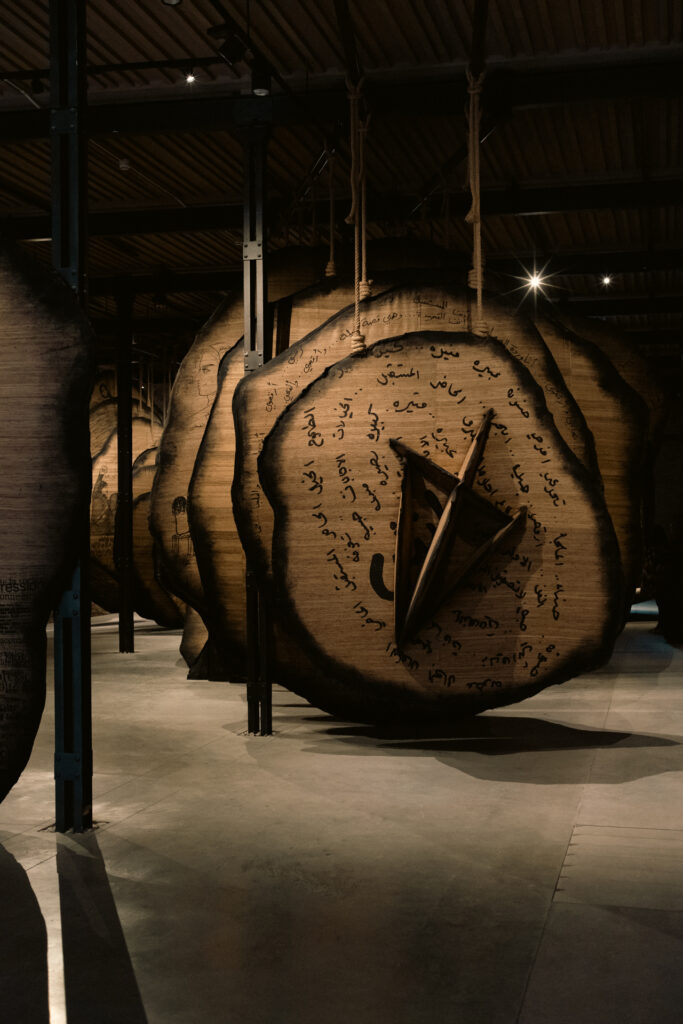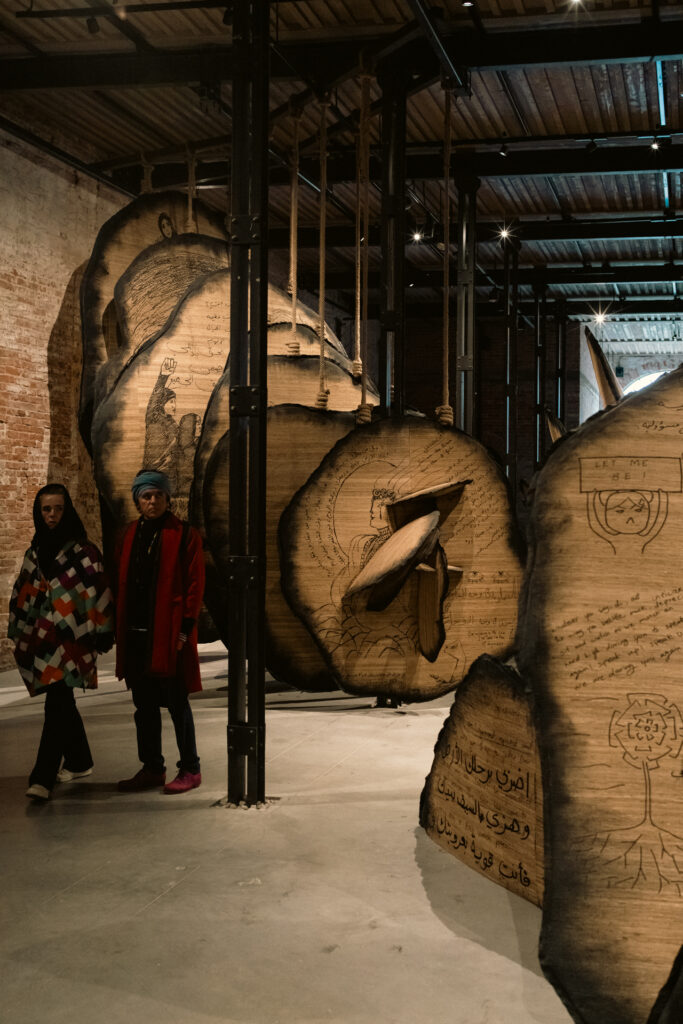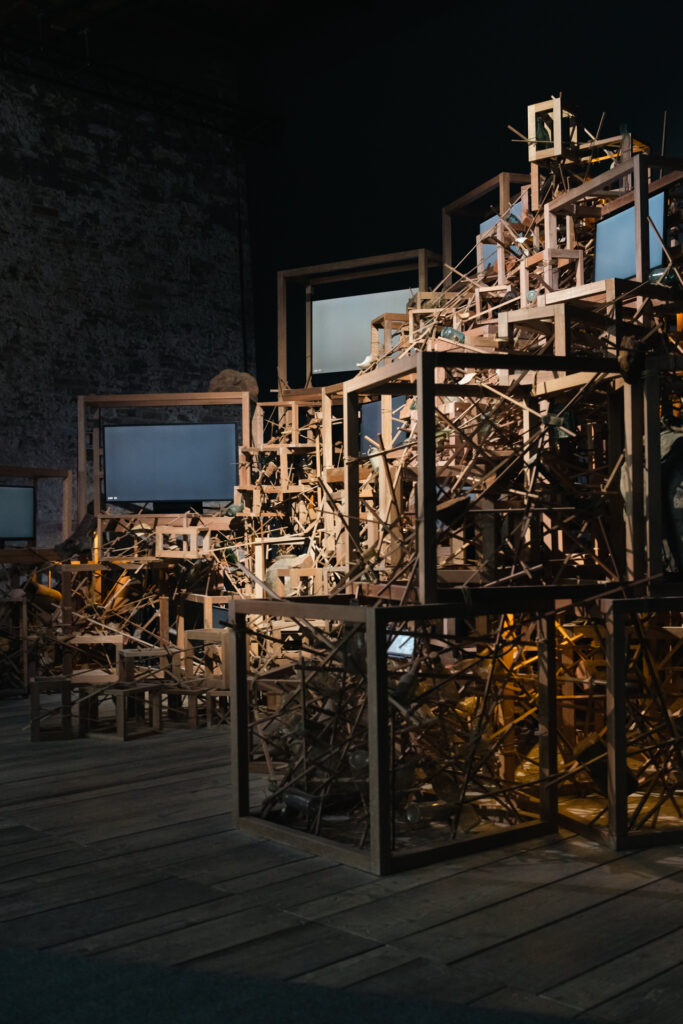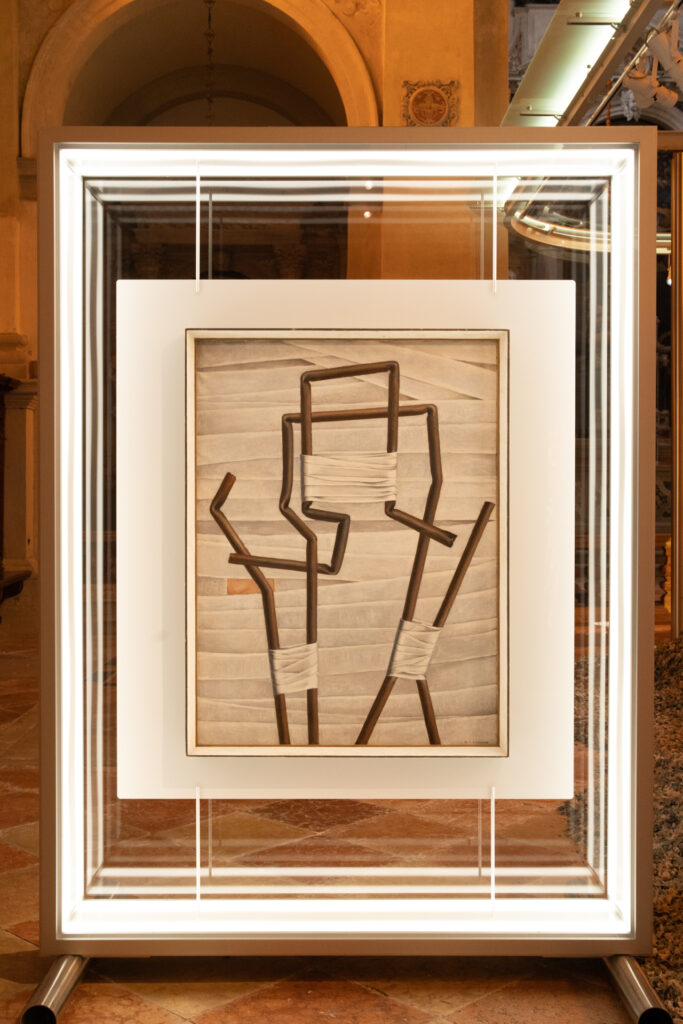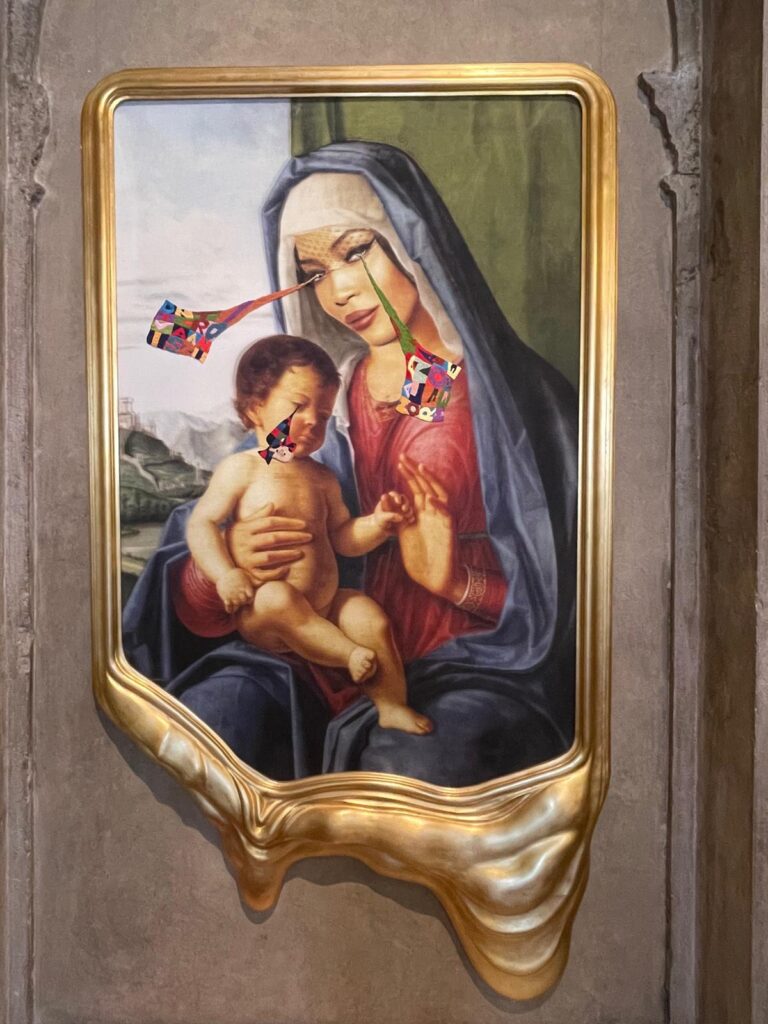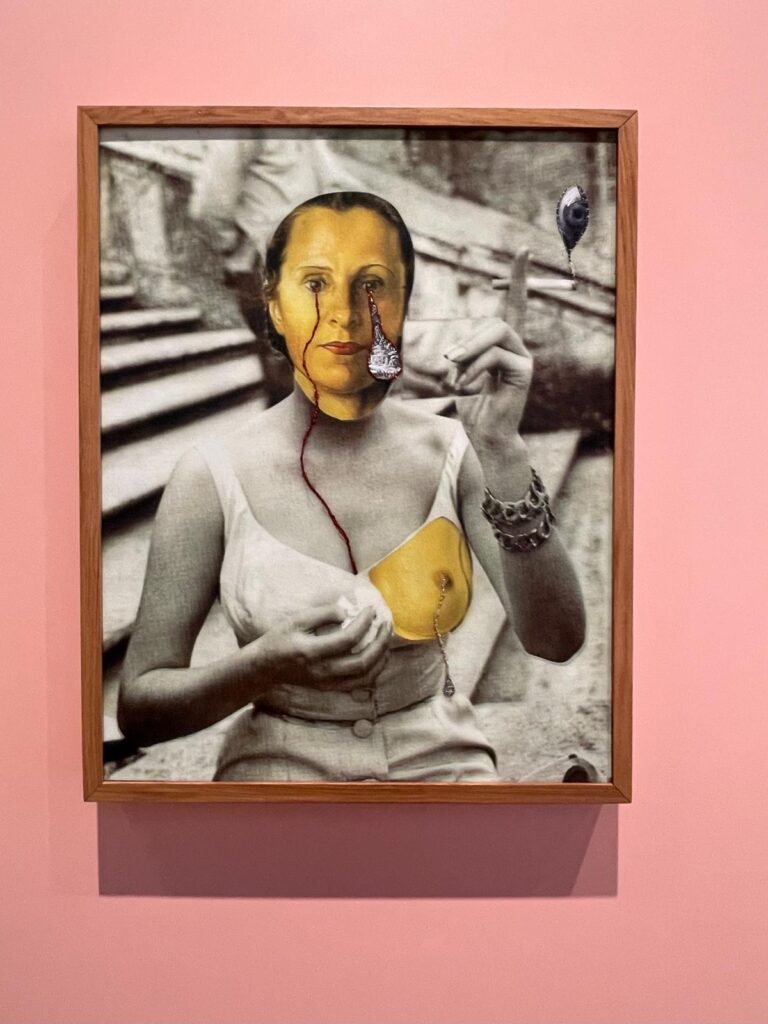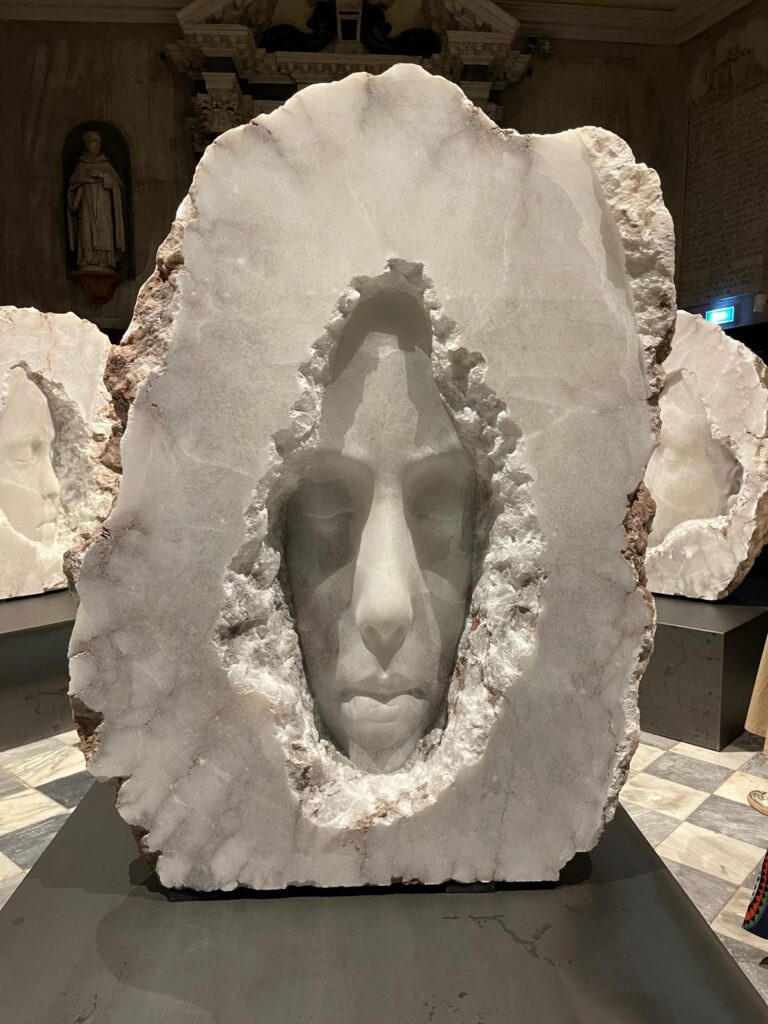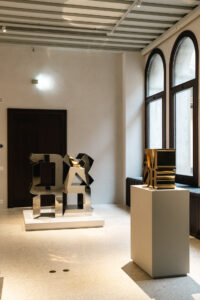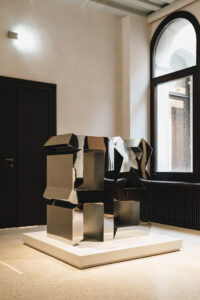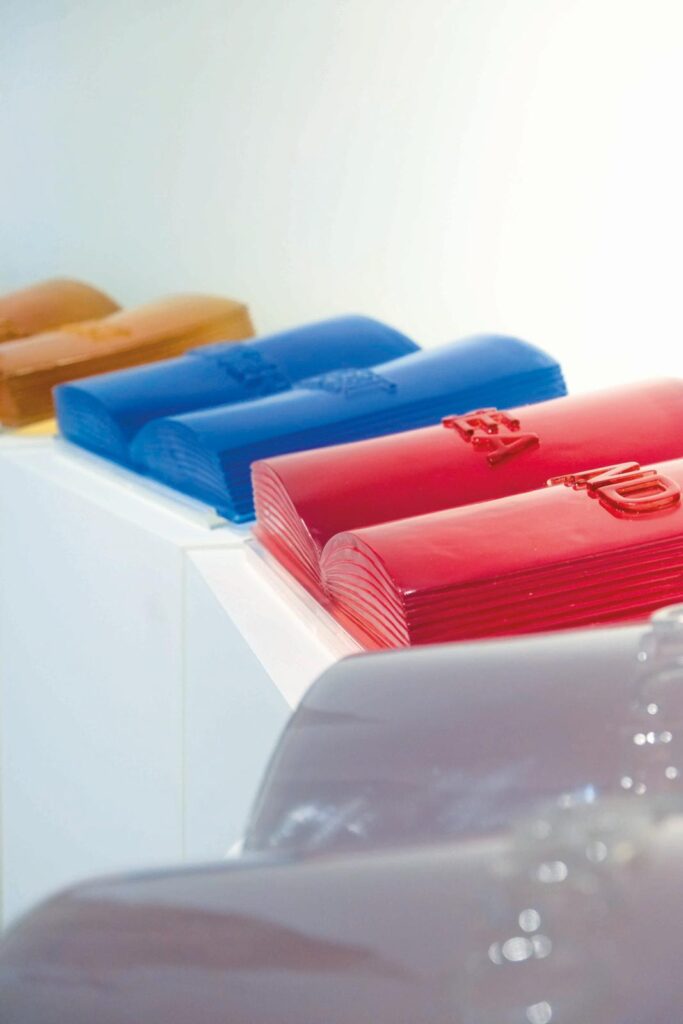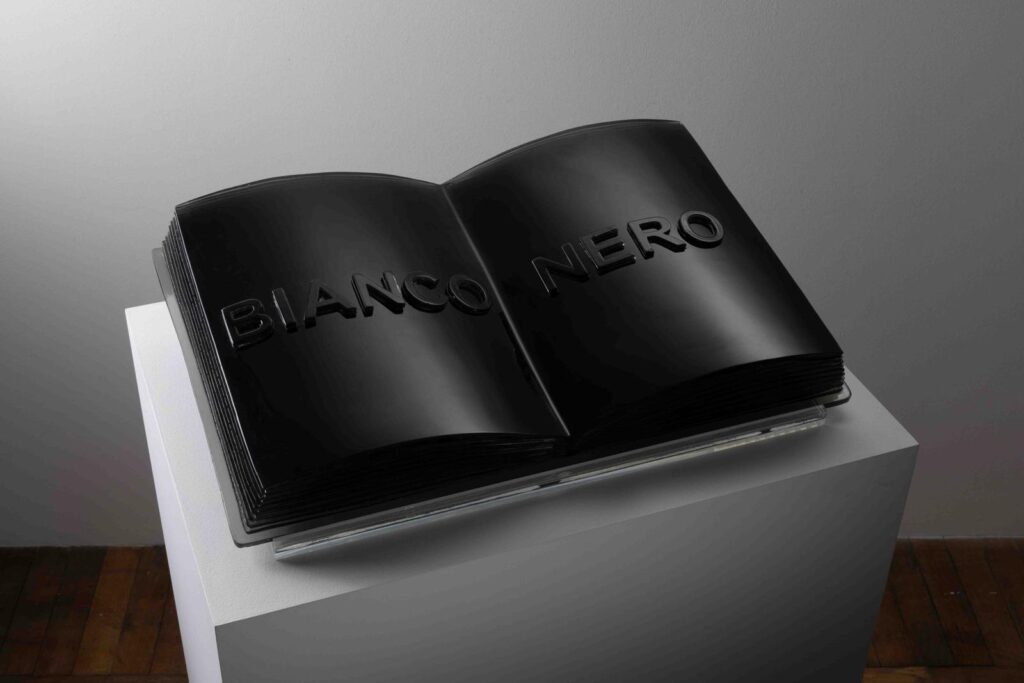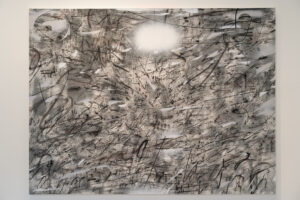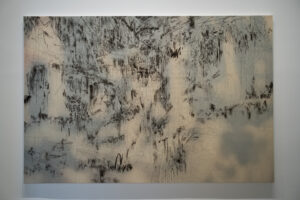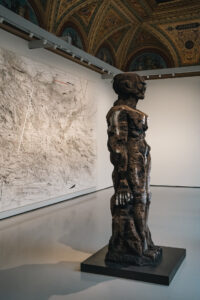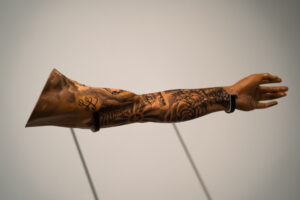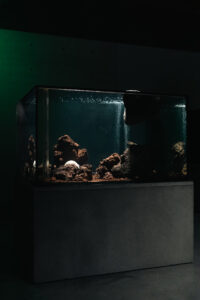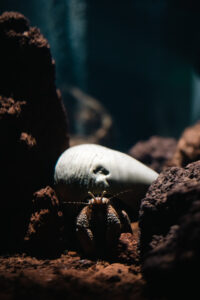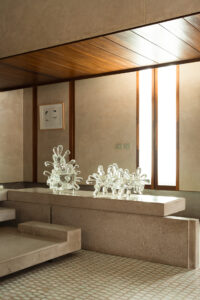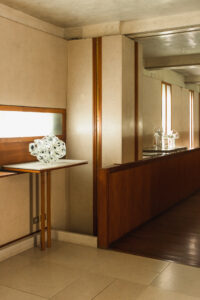
Venice Art Biennale 2024
Paris is widely known as the city of love. I beg to differ. I believe said title by all rights should belong to Venice. If you wish to fall in love you might as well do it here. The city is positively permeated by romance. Maybe that’s why when I visit, even for work, it always ends up being a pleasure trip.
April was truly a “tour de force” month. With barely enough time to dash through the Milan Design Week I was hastily off to Venice for the latest Art Biennale. This year the theme was “Foreigners Everywhere” spotlighting artists from diverse backgrounds, marginalized groups and the stories they have to tell.
The event spans the entire city so trying to highlight every single event I attended would be a disservice to my readers. Keep in mind that the Biennale is so dense there’s virtually an event or exhibition around every corner. That being said, I’d love to show some of my favorite pavilions and exhibitions that I’ve visited.
International Pavilions
Nordic Countries (Sweden, Finland, Norway)
The Altersea Opera is an audio-visual installation, a drama where an epic quest at sea suggests the existential implications of displacement and belonging. The project is conceived and conceptualised by artist Lap-See Lam (Sweden) and realised in collaboration with experimental composer Tze Yeung Ho (Norway) and textile artist Kholod Hawash (Finland). At the centre of the story, we find the Cantonese mythological figure Lo Ting – half fish, half man – and his longing to return to his former life in Fragrant Harbour.
Working with contemporary technology and traditional references and techniques, Lap-See Lam’s generative practice at once claims and complicates the notion of cultural heritage. The score, composed by Tze Yeung Ho, merges Baroque ornamentation and unexpected instruments in melancholic melodies, interspersed with lullabies and poetry that draw on the multilingual background of the artists. Kholod Hawash’s textile works form a sculptural installation in the pavilion.
In the spirit of the Red Boat Troupes, the travelling company that popularised Cantonese Opera in the 19th century, The Altersea Opera veers between the real and the imaginary while telling a story of generational loss and diasporic experience, and negotiating a desire to stay with the need to move on.
Germany
For me this was one of the standouts this year. By far the longest line, but it was well worth the wait.
One of the standouts this year with the longest line by far though it was thoroughly worth it.
Under the title Thresholds, the German contribution explores history and the future in three scenarios:
In the first scenario, artist, photographer, and filmmaker Yael Bartana departs from a present perceived as catastrophic; a world on the brink of total destruction.
In the second scenario, the theatre and opera director Ersan Mondtag develops a space that contrasts the monumental character of the pavilion with a fragmentary, seemingly minor narrative.
In a third scenario, the contribution engages in building a bridge to another location outside the Giardini: the island of La Certosa. Here the artists Michael Akstaller, Nicole L’Huillier, Robert Lippok, and Jan St. Werner create a resonant space with works that focus on the significance of the moment of temporal and spatial transition.
Canada
Kapwani Kiwanga is a multi-disciplinary artist concerned with forms of power: their suppressed histories and quotidian effects. The artist transforms the Canada Pavilion by way of a site- specific sculptural installation on the building’s interior and exterior, turning it into a large-scale tableau. Shapes shift, dissolving distinctions between inside and outside. As one moves through the coil-like architecture, it unfolds, multiplying perspectives.
The installation principally consists of conterie (seed beads), historically employed as both currency and items of exchange. Conterie were dispersed globally from the Venetian island of Murano and incorporated into various material cultures. Kiwanga uses these tiny glass units to construct the monumental out of the minute, each bead acting as a witness to past transactions that changed the socioeconomic landscape of the sixteenth century and beyond. The work addresses the often-destructive history of commerce and how the trade of these beads shaped the world. Other materials related to the trade of conterie are also included. They rise from the pavilion’s floor onto the walls and spill out into the courtyard. As they meet the beads, they formalise a place of exchange, prompting reflection on issues of value, aesthetics, and global economic relations.
France
The sight of the matoutou falaise is a gift when it appears in dense forests, on the bark of the Zamana trees or the rocks of the Martinique shores. It requires a deep connection to the environment; an eye that sweeps the contours and glides over the textures. It is about appearances and disappearances, what is given, protected, and also unseen… This way of seeing is undoubtedly what Julien Creuzet strives to offer through the experience of his work. It describes an immersion in a poetry of forms and sounds, volumes and lines in movement, colourful encounters forming new languages: an experience to be lived deeply. This tarantula, endemic to Martinique, could well be the symbol of a way of being with art that history has yet to write. It nourishes, and protects, in the teaching of a sensible and poetic understanding of the world it offers a softer gaze to approach the many ecologies of life. Creuzet’s forms stem from a locus of emancipation, which must be felt to truly see. It is a moment of learning and unlearning as a reconciliation with our senses, as well as a space to be untranslated and liberated.
Hungary
Márton Nemes’ work is influenced by techno subcultures; the explosion and rearrangement of the pictorial field gives a psychedelic character to his abstract paintings that evoke the visual atmosphere of nightclubs. Combining painterly and sculptural elements, his multimedia installations create a hypnotic spatial dynamic that propels the viewer from the harsh, real world into a dizzying, fluorescent colour field.
Nemes designed the project Techno Zen as an immersive, painting-based Gesamtkunstwerk that expands to other media. Laser-cut steel, car paint, enamelled steel plate, projection, DMX lights, speakers and coloured fans are the tools that he reinterprets the palette of painting with and makes the environment multisensory: its optical, acoustic and haptic content unfolds through the combined effects of light, colour, movement and sound.
The project, structured in three main parts, can be fully experienced when the visitor stands in the centre of the pavilion that links left, right, front and back spaces. To be in the middle carries a symbolic meaning, it is both physical and ontological. In an era of polarized societal phenomena that exclude nuances, the project conveys a humanistic message that we, albeit its simplicity, should keep reminding ourselves of.
Australia
The winner of this year’s “Golden Lion” award the Australian pavilion (also one of my favourites) explores the theme in a sombre installation imagined as a memorial.
Handwritten across the walls and ceiling, the family tree engulfs the audience. The education materials refer to the transmission of knowledge and what is left out of history. Kamilaroi and Bigambul words in the drawing assert Indigenous language revival initiatives, while holes signal colonial invasions, massacres, diseases and displacement that sever familial ties. The central reflection pool is also a void; a memorial to First Nations deaths in state custody attended by piles of coroners’ reports. Archie adds archival records referencing kin to demonstrate how colonial laws and government policies have long been imposed upon First Nations peoples. These bureaucratic papers documenting tragedies are cradled by the reflection of the family tree in the surrounding water. The artist uses his family history to make systemic issues uncomfortably tangible to audiences while providing a prescient reminder that we are all kin.
Serbia
The title of the exhibition, Exposition coloniale, recalls the consequences of the colonial era. This historical context sets the stage for Denić’s exploration of the contemporary ramifications of colonialism, and the ongoing impact of the division and subjugation of peoples and cultures. In today’s world, the themes of usurpation, division, and control continue to be pertinent, not only in the realm of politics and finance but also in the sphere of basic human values and principles. Through his significant and awarded artistic experience in theatre, Denić used his skills to delve into complex and pressing issues. Intricate structures and spatial conglomerates are imbued with the anxieties of the society in which they exist. They act as social memorabilia, capturing the essence of human sojourn and reflecting the lost sensibility and intimacy of our interactions within them. By employing symbolic inversion within the exhibition, he challenges viewers, placing them in a setup to reexamine their understanding of power dynamics, consumerism, and multiplied bitter realities in the current state of affairs; finding himself personally, as a foreigner, as an artist who is professionally permanently displaced to Germany and German-speaking areas, where he has been working over the past decades.
Greece
Xirómero/Dryland is a hybrid audio- visual installation that is the result of a collective artistic endeavour. The project’s creative team consists of artists and theorists while the work showcased comprises fragments of research, performances, sounds sequences and video installations.
Using water as its focal point, Xirómero/Dryland explores the political potential of sound and music as well as the impact of technology on rural landscapes and cultural diversity.
The artists explore the experience of a provincial fair, following its course and movements from the village square all the way out to the land. The work draws from the local traditions of Central Greece and of the Xirómero region, which also lends the project its title.
Malta
Matthew Attard investigates the versatility of contemporary drawing, exploring its performative and time- based nature, generating intersections between the physical and digital realms. Attard shares the authorship of his art with an eye-tracker—an advanced scientific tool recently appropriated by corporate entities. To the artist, the eye-tracker is an extension of himself, offering a platform to explore the hybrid territory between humans and machines: a smart collaborator in the production of contemporary art.
In I Will Follow the Ship, he further intertwines digital drawing with historical imagery. The pavilion unfolds as an exploration of the legacy and meanings of ship graffiti, humble drawings and ex-voto motifs found on the façades of wayside chapels in Malta. The meanings of these anonymous ship drawings reverberate today, where computer technology and the Internet have propelled mass artistic emancipation and overturned traditional local centres of power. A parallel is thus drawn between these stone incisions and contemporary digital drawing. In the pavilion, the ships captivate the audience, enabling digital interaction and shared speculative thought. They metamorphose into symbols of hope and uncover concealed truths that lie beneath forecasts, emotions and convictions.
Uzbekistan
Uzbekistan emerged as a fan favourite and with good reason. An immersive experience which explores the merging of traditional handcrafts and latest technologies.
Uzbek diaspora artist Aziza Kadyri explores the experiences of Central Asian women and how they reimagine their identities in the process of migration. In a deconstructed theatre backstage, costumes become sculptures alongside audiovisual work co-created with Tashkent-based Qizlar Collective, rooted in women’s narratives, exploring embodied memories and the relationship between the body and its environment. The installation links Uzbek Suzani embroidery and AI image generation, unveiling AI’s biases and its global impact on shared memories. While in the space, the viewer is invited to embody both the observer and the observed, shifting between states of exposure—changes perceptible only to the onlookers beyond this space of accidental performance.
Italy
Very grateful to @lindabajare_art for a personal invitation for the tour of the Italian pavilion. It was an amazing experience to have been guided through the exhibition by the artist Massimo Bertolini.
Designed with two entrances, the exhibition Due qui/To Hear — presented with support from the Italian Ministry of Culture’s Directorate-General for Contemporary Creativity — moves through three spaces built around various acoustic experiences and meeting points, suggesting the highly relational nature of sound. Visitors can enter an almost empty room where they are welcomed by a small sculpture of a Pensive Bodhisattva, a Buddhist figure who prefers thought to action. The drone of an organ pipe creates a sense of frozen time, a space of waiting. In the central room, a large scaffolding of pipes has been transformed into an organ playing a melody composed by Caterina Barbieri and Kali Malone. Visitors can walk through and sit down on a circular bench. At its centre is a pool where a wave constantly rises and falls, prompting a form of meditation, even a trance state. Coming out into the garden, they can listen to two stories about the cycle of birth/death (and regeneration): that of a tree (by Nicoletta Costa) and that of a human being (by Tiziano Scarpa). Further on, they will also hear a choral work (by Gavin Bryars). Hanging in the branches of a tree, these voices sing of a person who feels roots growing through him. They pin him down, but also bring him closer to others, to the Whole…
Argentina
In Hope the Doors Collapse, Luciana Lamothe intertwines pieces of wood and pipes, people and structures, and mutability and permanence to create spaces inside spaces that modulate forms of violence and care in a tense balance of interdependent bodies. The work establishes matter as the principle of the real to effect a series of changes in traditional construction methods and in the relationships we form with our environments and with each other. The artist extends her research into the functions, limitations, and potentials of materials and their interactions with architecture to subvert some of its imperatives. The tangle of steel and wood thus positions us in an environment whose material forces manifest their agency and erode the anthropocentric ontology of modernity. Each of the four sculptures serves as an enveloping and habitable space proposing a different way of conceiving our connection with the material world. They contain both forms of care and aggression that appear in the cuts, slashes, assemblages, and twists required for the work to maintain its shape: a series of wounds and sutures that recognize the weight of centuries of social, spatial, and material conditioning. The work’s entanglement enunciates an ecology in which bodies, objects, and structures fracture the borders separating culture and nature, human and non-human, to imagine material alliances for other possible ways of living together.
Saudi Arabia
Manal AlDowayan’s installation, Shifting Sands: A Battle Song, is inspired by the evolving role of women in Saudi Arabia’s public sphere and their ongoing journey to assert their place and to reshape the narratives that have historically defined them.
In Shifting Sands: A Battle Song, visitors are invited to wind their way through a maze of large-scale, printed silk, petal- like sculptural elements that take their forms from the “desert rose”, a crystal commonly found in Saudi Arabia’s desert sands. The surface of these sculptures is silk screened with texts written about Saudi women, a cacophony of media opinions, that have had a profound impact on their perception and obscured their own self-representation.
Yet, at the centre of the work, a shift occurs. Here, Saudi women boldly proclaim themselves. Through a series of participatory workshops, Manal AlDowayan has offered Saudi women and girls a platform to assert their own voices, setting forth a rallying cry of courage and solidarity.
In AlDowayan’s words: “I hope this artwork will encourage women to look within themselves and to lean on their community of women, to find their voice and their space within this new chapter in history, much of which is still unwritten”.
United Arab Emirates
Artist Abdullah Al Saadi is a wanderer, chronicler, cartographer, poet, decipherer, alchemist, memory carrier, and storyteller. For the UAE Pavilion, his solo exhibition features eight artworks that were produced on his journeys in the wilderness and proposes to look at his creative process in relation to the practices of Arab poets centuries ago. During his journeys, Al Saadi starts to draw, paint or write once he feels immersed in nature. Similarly, classical Arab poets described this immersion as the process leading up to the composition of their poems.
For over forty years, Al Saadi has been creating singularly subjective narratives. Through a process of assiduous archiving, he keeps his maps, stones, scrolls, and drawings in tin boxes of various shapes and sizes. In turn, they are stored in big metal chests like treasure boxes, numbered, dated, and coded, as if he is creating and preserving a collective memory for the future. Visitors are invited to experience the artist’s world, in a performative re-enactment of his studio rituals of manifestation and disappearance, of remembrance and forgetting.
Singapore
In Seeing Forest, artist Robert Zhao Renhui offers an evocative exploration of secondary forests—forested areas that have regrown over land previously disturbed by human development. These areas have become the threshold between undisturbed primary forests and developed urban environments.
Rooted in several years of accumulated observations, the exhibition explores the multifaceted life of Singapore’s secondary forests, as well as the manifold worlds within them, encapsulating the landscape’s histories of settlement, colonisation, migration and mutual co-existence amongst species.
Through an assemblage of video and sculptural installations, Seeing Forest explores the lesser-seen stories and moments of apparent dependence between human society and nature. The presentation reveals how these transitional spaces can offer points of intersection for history, sustainability, and discovery, while suggesting that the edge of a city – especially one that is so carefully planned – may be the most intense frontier in existence.
Lithuania
Was delighted to see my home country participate in the biennale.
The project brings together the distinct experiences of artists belonging to two generations and explores the inflammation of (post)human bodies under today’s economic and social conditions. Marija Teresė Rožanskaitė’s paintings and a sculptural installation by Pakui Hardware (with assistance from the architectural duo Išora x Lozuraitytė) are connected by themes of medicine and hospitals, as well as natural, cosmic, and industrial landscapes.
The fused aluminium and glass sculptures by Pakui Hardware resemble enlarged nervous systems and swollen organs. They were moulded on scorched earth (the aluminium elements) and shaped in sweltering heat (the glass elements). In the paintings by Rožanskaitė, unnamed diseases, sterile operating theatres and medical consultation rooms, visceral-themed assemblages, and machine-like objects irradiate a chronic inflammation of the cosmic flesh.
Accordingly, in this delirious post- landscape, it is difficult to distinguish between what is attributed to nature and what is considered a human creation. Objects referring to human bodily systems in a state of inflammation, architecture, a post-natural landscape of plastic soil, light, and other technologies merge into a unified hybrid techno-organism.
Art Exhibitions
Francesco Vezzoli
The idea of a new project for the city of Venice was developed as a natural continuation and completion of this long discourse made up of archaeology, memory and contemporary invention, further explored in the recent exhibition Vita dulcis. Paura e desiderio nell’Impero romano (Palazzo delle Esposizioni, Rome, 2023). Together with Donatien Grau, Francesco Vezzoli has devised the exhibition Musei delle Lacrime, in which he will place his works (historical, recent and some created for this occasion) beside masterpieces from the collection of the Museo Correr. Designed especially for Venice, the project also pays tribute to Carlo Scarpa and his work on the city’s historical and artistic identity and in particular Venice’s museums.
Jaume Plensa
Was a great privilege to personally meet the artist Jaume Plensa for his solo exhibition.
“JANUS”, Jaume Plensa’s intervention in the Chiesa di San Gallo, uses the duality of the ancient myth of Janus, to offer a hymn to hope, using the past to illuminate our gaze towards the future, to create a poetic and spiritual silence. Today we live in a turbulent time, where chaos, the suffering of thousands of emigrants and the terrible wars that devastate us have become normal in our daily lives, the exhibition hopes therefore to foster a long-awaited harmony and peace.
Robert Indiana
Was delighted to be invited to view the solo exhibition of renowned american artist (whose work I’ve admired for quite some time now) Robert Indiana.
“The Sweet Mystery” marks one of the most significant presentations in Italy to date of Indiana’s work. The exhibition, on view at the Procuratie Vecchie, is presented by Yorkshire Sculpture Park, and is an official Collateral Event of the 60th International Art Exhibition – La Biennale di Venezia. Developed with The Robert Indiana Legacy Initiative, this exhibition offers a revelatory perspective on Indiana’s work, focusing on the central themes of spirituality, identity and the human condition that are key to understanding his creative evolution. Artworks on view span six decades of Indiana’s career and include significant early works, some of which have rarely been publicly displayed.
Chiara Dynys
Always a delight to both view the work and catch up with both artist and personal friend that I’ve been working with for a long while.
Chiara Dynys is one of the most important contemporary Italian artists, whose work has always been distinguished by particular attention to dialogue with historical space in both its architectural and discursive dimensions. In continuity with this perspective, Lo Stile is an exhibition and a site-related project, designed specifically for Ca’ Pesaro and at the same time pays reference to the work of Piet Mondrian and the artistic current of Neoplasticism. An exhibition of great visual power, apparently provocative but eventually revealing the centrality of the form of language in the art.
Pinault Collection
Perhaps one of the biggest highlights of the entire Biennale. The Pinault Collection presented two separate exhibitions in two separate venues.
Palazzo Grassi – Julie Mehretu: ENSEMBLE
Curated by Caroline Bourgeois, Chief Curator of the Pinault Collection, with Julie Mehretu, the exhibition brings together a selection of more than fifty works, between painting and printmaking, that the artist produced over the timespan of 25 years, including several of the artist’s recent paintings from 2021-2024. Presented over two floors of Palazzo Grassi, the exhibition unites 17 works from the Pinault Collection, as well as loans from international museums and private collections.
The exhibition is punctuated by the presence of the works by some of her closest artist friends, with whom she has developed a powerful affinity over the years and with whom she has exchanged and collaborated. Organised following a principle of visual echoes, this exhibition is conceived as a free, non-chronological journey through Julie Mehretu’s work. It allows us to explore her artistic practice, to understand both how it came into being and how it is constantly renewed.
Punta della Dogana – Piere Huyghe: LIMINAL
Liminal, an exhibition created by Pierre Huyghe in close collaboration with curator Anne Stenne, presents major new creations alongside works from the last ten years, particularly from the Pinault Collection.
Pierre Huyghe has since long questioned the relation between the human and the non-human, and conceives his works as speculative fictions from which emerge other modalities of world. Fictions, to him, are “vehicles for accessing the possible or the impossible—what could be or could not be.”
Pierre Huyghe transforms Punta della Dogana into a dynamic, sensitive milieu perpetually evolving. The exhibition is a transitory state inhabited by human and non-human creatures and becomes the site of formation of subjectivities that are constantly learning, changing, and hybridizing. Their memories are expanding with information captured from events, both perceptible and imperceptible, that permeate the exhibition.
Olivetti Showroom
One of the joys of an event of this scale is that you never quite know what you can find. Around every corner there is an undiscovered gem. This year for me it was the “The Olivetti Showroom” which I had glimpsed while running back and forth through the city but after a quick look I knew I had to make a stop there eventually.
In the center of Venezia in San Marco Square, the Negozio Olivetti was the Olivetti showroom – the famous and iconic brand of typewriters. This little masterpiece of 20th century architecture is an example of the elegant intelligence of the great architect Carlo Scarpa.
Negozio Olivetti is hosting the temporary exhibition “Tony Cragg. Le forme del vetro” curated by Cristina Beltrami and Jean Blanchaert, produced in collaboration with Berengo Studio. On the occasion of the exhibition, part of the Olivetti typewriters and calculating machines have given space to glass works by Tony Cragg.













